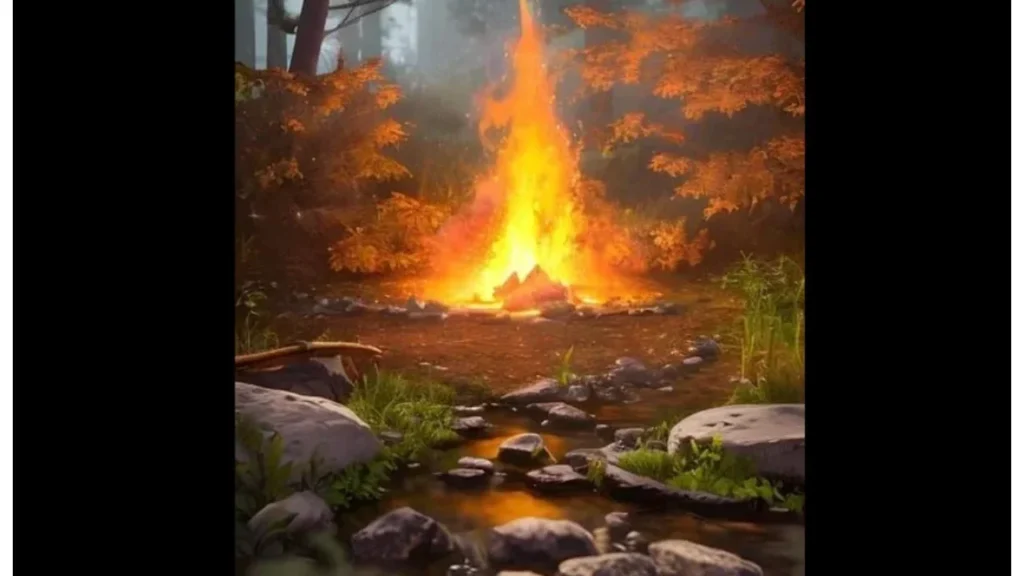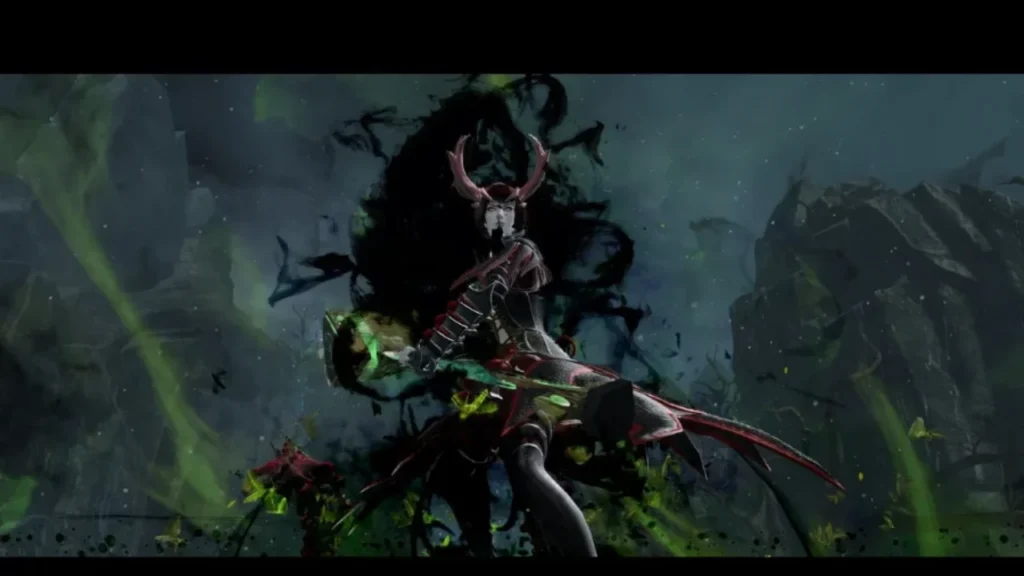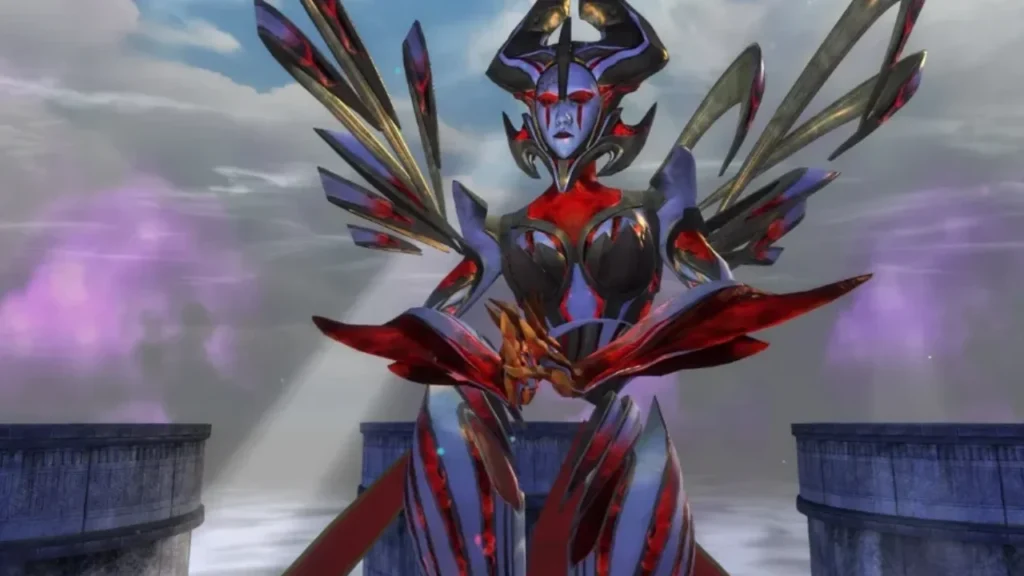Why Pow Temp Removed from SnowCrows GW2: The recent removal of the “Pow Temp” (Power Tempest) build from SnowCrows’ recommended lineup for Guild Wars 2 has sparked a lot of conversation among the game’s community. SnowCrows, known for its optimized builds for high-level content like raids, frequently updates its recommendations based on game updates and shifts in the meta. This change has led players to reconsider their strategies and explore alternative builds.
Without the Pow Temp build, players are discovering fresh playstyles and experimenting with strategies that had previously been underused. This shift encourages more creativity within the community, as players now have to think outside the box and adapt to the evolving game environment.
The removal of Pow Temp reflects a broader change in how Guild Wars 2 is played, with the community delving deeper into game mechanics and exploring unconventional builds. This encourages growth and mastery by pushing players to adapt to the latest developments and find new ways to succeed.
While the Pow Temp build was once a staple for certain encounters, its removal indicates that it may no longer be the optimal choice in all situations. As a result, the community is reevaluating its approach to tackling in-game challenges, which contributes to the continued evolution of Guild Wars 2’s competitive environment.
Power Tempest’s Decline in Guild Wars 2: A Shift in the Meta
The Power Tempest build, designed for the Elementalist class in Guild Wars 2, was once celebrated for its impressive burst damage and eye-catching abilities. It became a go-to option for players who preferred an aggressive, high-damage playstyle. However, with the release of major expansions like Path of Fire and End of Dragons, the game’s mechanics underwent significant changes, introducing new classes and elite specializations that altered the competitive meta.
These expansions brought a wave of balance adjustments, aiming to prevent any single build or class from becoming overpowered. As a result, Power Tempest began to fall behind in terms of its damage output and overall utility, especially in high-tier raids. The introduction of these new dynamics rendered older builds like Power Tempest less viable in optimized raid compositions, making room for newer strategies that better fit the evolving game environment.
The Decline of Power Tempest in Guild Wars 2: A Meta Shift
Power Tempest, once a dominant build for the Elementalist class in Guild Wars 2, earned its reputation for delivering high burst damage and offering visually impressive abilities. It became a popular choice among players who thrived on aggressive, damage-focused gameplay. However, with the introduction of expansions like Path of Fire and End of Dragons, the game experienced significant changes that reshaped its mechanics. New classes, elite specializations, and balance updates altered the competitive landscape of Guild Wars 2.
To maintain a balanced and diverse gameplay experience, the developers continuously released updates aimed at preventing any single build or class from becoming too powerful. This has led to a gradual shift, with Power Tempest losing its competitive edge, particularly in high-level raid content. The evolving meta has resulted in newer builds emerging with greater utility and damage output, making older builds like Power Tempest less desirable in optimized raid setups.
The removal of Power Tempest from SnowCrows’ recommended builds is a direct consequence of these ongoing balance changes. Modifications to elemental attunements and damage coefficients reduced the build’s effectiveness in comparison to newer options. As elite specializations were introduced, players found alternatives that offered higher damage potential and more utility, driving the meta toward these newer strategies.
Further adjustments, such as buffs to other classes and specializations, contributed to the diminishing viability of Power Tempest in both PvE and raid environments. Over time, this build was no longer able to meet the increasing demands for efficiency and damage, prompting SnowCrows to prioritize more optimal builds that align with the current meta.
The removal of Power Tempest from SnowCrows’ recommendations signals a major shift in how high-end gameplay is approached in Guild Wars 2. While it once served as a go-to build for raid and fractal content, the evolution of the game’s balance and the introduction of new player strategies have made this build less relevant.
Understanding the factors behind this shift helps players recognize the importance of adapting to the dynamic nature of Guild Wars 2. As the game’s meta continues to evolve, staying updated on these changes is essential for achieving success in its most challenging content.
SnowCrows’ Data-Driven Approach and the Decline of Power Tempest
SnowCrows has built a reputation for its methodical, data-driven analysis of raiding builds in Guild Wars 2. The community surrounding SnowCrows consists of top-tier players who rigorously test and refine builds under high-pressure raid conditions. As the meta evolved to favor builds that combined damage output with greater versatility and survivability, the weaknesses of Power Tempest became increasingly evident.
Power Tempest’s reliance on specific conditions to achieve optimal damage output proved to be a disadvantage in raid environments, where flexibility and consistent performance are crucial for success. As new builds emerged, offering more reliable utility and adaptability, Power Tempest struggled to keep pace with the changing demands of the game’s most challenging content.
SnowCrows’ Benchmarks and the Decline of Power Tempest in Guild Wars 2
SnowCrows is known for its thorough evaluation of various raid builds, assessing not only raw damage but also their overall contribution to the success of a raid team. When comparing Power Tempest to newer builds, its performance began to noticeably decline. While it was still capable of delivering strong damage, alternative builds started to outpace it by offering additional benefits, such as healing, crowd control, and buffs, all of which are essential for high-level raid success.

The decision to remove Power Tempest from SnowCrows’ recommended builds stems from its reduced performance in these comprehensive benchmarks. This doesn’t mean the build is ineffective, but rather that it no longer meets the rigorous demands of top-tier raid content. In more casual settings or for players not focused on the most optimized raid scenarios, Power Tempest remains a fun and viable option. However, in the competitive environment where every action counts, builds offering greater utility and consistency are now preferred.
Adapting to Guild Wars 2’s Evolving Meta
Guild Wars 2’s ever-changing meta, influenced by expansions and balance changes, requires players to constantly reassess their strategies. The shift away from Power Tempest highlights how balance updates can shape the raid landscape, pushing players toward builds that are more adaptable and provide greater utility. Staying up-to-date with these shifts is crucial for anyone aiming to perform well in high-end raids and maintain competitiveness.
The Broader Trend in Guild Wars 2’s Competitive Play
The removal of Power Tempest from SnowCrows’ recommended builds is part of a broader trend in Guild Wars 2, where numerous builds, including those for classes like Revenant, are being continually adjusted. This ongoing evolution reflects the dynamic nature of the game, ensuring that no single build remains dominant and that players must remain flexible and adaptable as the game’s competitive environment shifts.
SnowCrows’ Benchmarking and Power Tempest’s Performance Shift
SnowCrows employs a rigorous benchmarking process to evaluate the performance of various builds in different raid scenarios. These benchmarks go beyond just assessing raw damage output; they measure the overall contribution of each build to the success of the raid team. In this context, Power Tempest showed a decline in its effectiveness when compared to newer builds. While it still delivered solid damage, alternative builds began to offer not only comparable damage but also additional features such as healing, crowd control, and buffs—critical components for success in high-level raiding.
As Power Tempest struggled to match these new builds in terms of utility and raid contribution, it was gradually removed from SnowCrows’ recommended builds. This decision was not based on the build’s viability for more casual or less optimized groups, but rather a result of its decreasing performance in top-tier, highly efficient raid environments. SnowCrows’ focus shifted to builds that align more closely with the evolving demands of elite raiding content.
The Removal of Power Tempest from SnowCrows’ Guild Wars 2 Builds: Understanding the Shift
Power Tempest’s removal from SnowCrows’ recommended builds can be traced to its reliance on highly precise skill rotations to maximize damage output. This high skill ceiling made the build challenging for many players, especially those who prefer a more relaxed or casual playstyle. The need for near-perfect execution ultimately limited its widespread use, reducing its long-term competitiveness in the evolving raiding meta.
SnowCrows plays a key role in shaping the Guild Wars 2 raiding meta, with its build recommendations influencing player strategies. The decision to phase out Power Tempest highlights how the team evaluates builds based on their performance in high-level raids, considering not only damage but also consistency, flexibility, and support roles.
Adapting to the Evolving Meta: What’s Next for Elementalist Players?
With Power Tempest no longer part of the top-tier builds, Elementalist players may be wondering how to adapt. Thankfully, there are several viable alternative builds currently gaining popularity. These builds offer a mix of strong damage output, increased utility, and versatility, ensuring that Elementalists can continue to thrive in high-level content without relying on outdated strategies. Exploring these new options will allow players to refine their gameplay and stay competitive in the ever-changing meta.
The Reason Behind Power Tempest’s Removal
The decision to remove Power Tempest reflects the constantly evolving nature of Guild Wars 2’s competitive scene. As balance updates and expansions are introduced, the game’s meta shifts, requiring players to adapt. The removal of Power Tempest is part of a broader trend toward optimizing raid roles for better synergy within groups. New builds have emerged that offer more consistent damage or better support roles, making Power Tempest less viable in the current competitive environment.
As updates roll out, class roles and build synergies are fine-tuned to ensure more balanced and versatile raid compositions. This ongoing process of refinement explains why certain builds, such as Power Tempest, may lose their effectiveness over time.

Community Reactions to the Removal of Power Tempest
The community’s reaction to Power Tempest’s removal has been divided. Many players expressed disappointment, as the build was a reliable and familiar option in raids, offering a satisfying playstyle. For some, its removal marked the end of an era, leaving a gap in their raid strategies.
On the other hand, many players welcomed the change as an opportunity to explore new tactics and refine their skills. The shift has brought a renewed sense of excitement, as players experiment with fresh strategies and adapt to the evolving meta. This mix of nostalgia for old builds and the excitement of discovering new approaches helps maintain Guild Wars 2’s dynamic and engaging environment.
Impact on Gameplay and Strategy
The removal of Power Tempest has led to significant shifts in both individual and group strategies. Players who once relied on this build are now exploring other options, leading to a more diverse range of playstyles. This has encouraged players to experiment with different specializations and find new synergies within raid teams.
With the absence of Power Tempest, team compositions are being reassessed, creating opportunities for players to master alternative roles and bring fresh strategies to the table. This evolution in gameplay not only enhances individual skill development but also contributes to the game’s overall competitiveness, ensuring that Guild Wars 2 remains a challenging and engaging experience for all players.
As the meta continues to evolve, adapting to these changes is essential for staying competitive and maintaining a dynamic raiding experience.
The Reason Behind Power Tempest’s Removal from SnowCrows’ Guild Wars 2 Recommendations
The removal of Power Tempest from SnowCrows’ recommended builds stems from a broader focus on achieving balanced, competitive gameplay in Guild Wars 2. As the game continuously evolves through updates and patches, the need for equilibrium among different classes and builds becomes increasingly vital. SnowCrows, known for its data-driven approach, decided to retire Power Tempest to ensure their recommendations align with the latest balance adjustments and the current state of the game.
By phasing out Power Tempest, SnowCrows ensures that its meta builds remain relevant and effective, promoting a fair and competitive environment. This decision supports players by providing strategies that align with the current meta, helping to maintain a dynamic and balanced gameplay experience for all levels of players.
The Impact of Power Tempest’s Removal on the Metagame
The removal of Power Tempest has had a notable impact on the Guild Wars 2 metagame, prompting players to rethink their strategies and explore new avenues for high-level content. As one of the most popular builds, its absence has sparked a wave of creativity within the community, with many players turning to fresh alternatives. This shift has encouraged a departure from traditional tactics, opening the door for players to experiment with different team compositions and configurations that thrive under the current game mechanics.
The removal highlights the delicate balance between developer-driven updates and player innovation. As the community adapts, they challenge the established norms, leading to new strategies that contribute to the evolving nature of the game. This ongoing process ensures that the competitive scene remains dynamic, with players continuously discovering new ways to engage with the game.
Community Feedback and Its Role in Shaping the Meta
The Guild Wars 2 community plays a crucial role in shaping the game’s evolution, especially when it comes to significant changes like the removal of Power Tempest. Players, through forums, social media, and direct feedback, provide valuable insights into their experiences, which developers use to fine-tune the game. This ongoing dialogue between players and developers ensures that the updates stay aligned with the preferences and needs of the community.
This feedback-driven process fosters a sense of ownership and collaboration between the developers and the player base, creating a more personalized and responsive gaming experience. By continuously listening to player input, developers are able to refine game mechanics and ensure that the Guild Wars 2 meta remains balanced, challenging, and engaging.

Emerging Strategies and Adaptations After Power Tempest’s Removal
In response to the removal of Power Tempest, players have demonstrated impressive adaptability by embracing new strategies and evolving their gameplay. Many are exploring innovative approaches that focus on unexpected synergies, pushing the boundaries of what was once considered effective. This shift in tactics has brought new life to team compositions, particularly in challenging content like raids, and has inspired players to revisit underused mechanics and synergies.
The Rise of Hybrid Builds and Increased Team Synergy
One of the key trends following Power Tempest’s removal is the rise of hybrid builds. These versatile builds combine offensive damage with support capabilities, offering a balanced approach to both survivability and damage output. Hybrid builds have filled the gap left by Power Tempest by offering players the flexibility to adapt to the varying demands of high-level content. These builds promote a deeper understanding of class mechanics and encourage experimentation with different skill sets, enhancing both individual and team performance.
Alongside the shift towards hybrid builds, there has been a renewed emphasis on teamwork and coordination. With Power Tempest no longer central to raid strategies, players are focusing more on real-time collaboration, using communication to fine-tune strategies and optimize team roles. This renewed focus on synergy has made team coordination more critical than ever, fostering a more dynamic and engaging environment in Guild Wars 2’s competitive scene.
As players continue to adapt to these changes, the game’s metagame evolves, ensuring that Guild Wars 2 remains an exciting and challenging experience for players seeking to push the limits of high-level play.
The Importance of Adapting to the Evolving Meta in Guild Wars 2
As Guild Wars 2 progresses with each new expansion and patch, the game’s metagame shifts, requiring players to continually adapt their strategies. A prime example of this evolution is the removal of the Power Tempest build, which demonstrates how balance changes can push the community toward newer, more versatile builds. These updates ensure the game remains dynamic and challenging, but they also require players to stay up-to-date with the latest developments to remain competitive, particularly in high-level raid environments. To excel in these scenarios, understanding and adapting to the current meta is essential.
The Influence of Community Feedback on Game Development
The ongoing relationship between Guild Wars 2’s developers and its player base plays a significant role in shaping the game’s balance and development. Feedback from players, often collected through community-driven platforms like Snowcrows, helps the development team make informed decisions on which aspects of the game need to be tweaked or reworked. This exchange is key to maintaining not only a balanced game but one that aligns with the expectations of the player community. This section explores how community insights, particularly on builds like Power Tempest, have influenced decisions to improve and evolve the game.
What’s Next for Elementalist Builds After Power Tempest’s Removal
With Power Tempest no longer recommended by Snowcrows, the focus turns to what lies ahead for Elementalist builds in Guild Wars 2. As the game continues to grow with each expansion, future updates may bring opportunities to revise older builds or introduce new ways for the Elementalist class to shine in raid environments. This section delves into potential future changes and strategies that could enhance the Elementalist’s role in high-end content, giving players a glimpse into how upcoming updates might reshape the class and its viability in the competitive raid scene.
Read More: Sora and Riku Lemonteve Carrol
Final Words
The removal of Power Tempest from Snowcrows’ recommended builds in Guild Wars 2 reflects the ongoing adjustments that are essential for maintaining a balanced and competitive gameplay environment. As the game evolves through expansions, balance changes, and community feedback, certain builds—such as Power Tempest—may no longer hold the same level of effectiveness in top-tier raid scenarios. This shift highlights the dynamic nature of Guild Wars 2‘s metagame, where adaptability and continuous learning are vital for success.
For players, the removal of Power Tempest opens up new opportunities to explore alternative strategies, roles, and synergies. As the community embraces innovation and collaboration, the evolving meta encourages fresh approaches to high-level content. While the absence of Power Tempest may be disappointing to some, it serves as a reminder that Guild Wars 2 thrives on its capacity to evolve, ensuring that every expansion brings new challenges and exciting opportunities for players to master.
By staying informed and open to new strategies, players can remain at the forefront of the game’s competitive scene. The evolution of builds, the role of community feedback, and the constant shifts in the metagame all contribute to the lasting appeal of Guild Wars 2, creating a dynamic environment that rewards creativity, adaptation, and teamwork. As the game continues to grow, the future of Elementalist builds and other class roles will undoubtedly present even more exciting opportunities for players to explore.
For More Information Check It Out CreativeInsider


